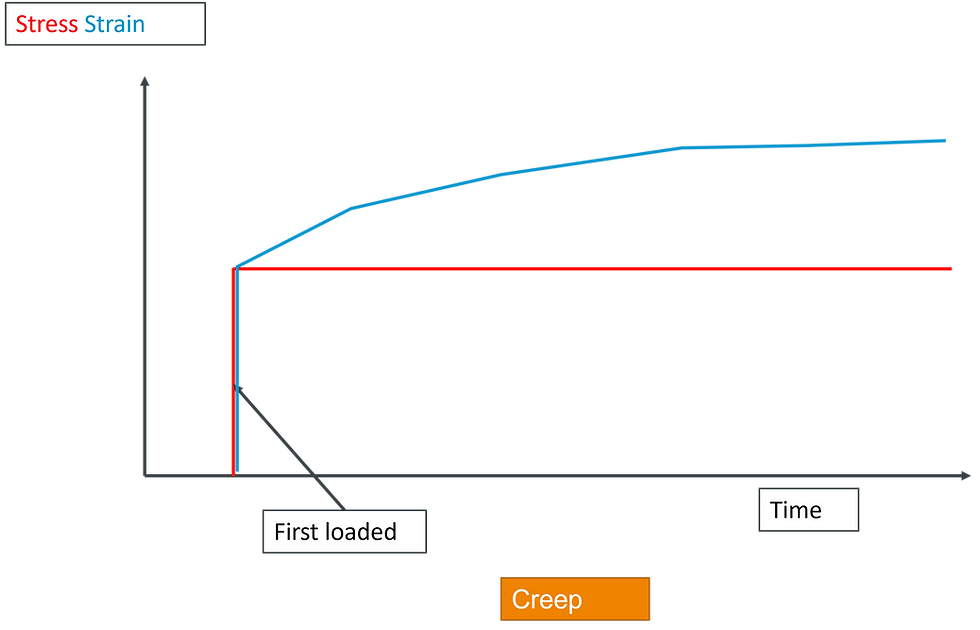Crack control of concrete using reinforcement to achieve water-tightness (2)
- Si Shen

- Oct 27, 2018
- 4 min read
My previous post on this topic (https://shensivictor.wixsite.com/main/blog/crack-control-of-concrete-1) explained the two types of cracks, through cracks and non-through cracks. This post will continue to dig down deeper, to explain the mechanisms behind the cracks and what we can do about them.
In terms of when and how cracks appear, concrete crack control using reinforcement fall into two categories:
1, Early age cracks, i.e. after the concrete is placed but before the useful life of the structure. This includes:
o Early age thermal cracks, due to heat released by the concrete while it solidifies. My previous post on this topic explains it a bit more. This either creates a temperature rise-and-drop for the whole member, or creates a temperature differential within the member (causing different layers in the structural member to expand and contract to a different degree)
o Autogenous shrinkage – this is a common property shared by all cement-based products. It happens mostly within the first year after it is placed. Bear in mind that only cement shrinks – the aggregates in the concrete do not.
2, Long-term cracks, i.e. during its service life as an asset. This can come from:
o Long-term thermal cracks. Ambient (i.e. environment) or internal temperature fluctuation during its useful asset life. Cracks are formed when concrete gets colder.
o Drying shrinkage. This is the shrinkage due to loss of moisture. Bear in mind that this should be differentiated from creep, which comes from mechanical source, whereas drying shrinkage is the escape of ‘left-over’ water (excess water that is not needed for the concrete chemical reaction). Concrete that is poured underwater and stays underwater mostly do not experience drying shrinkage.
o Structural loadings during its service life. Tension creates through cracks whereas bending creates non-through cracks, as explained in my previous post.
When the mechanisms stated above are combined with restrained concrete, i.e. concrete that is prevented from moving (particularly shrinking) freely, tensile stress builds up within the concrete. When the tensile stress exceeds the tensile capacity of concrete, the concrete will crack in response, as a means to relieve stress for itself. Yes, just like a human-being does.

There are three types of restraints (following CIRIA C660):
• Internal-restraint. This is caused by temperature difference between the concrete at the core and the concrete at the ‘shell’ (outer zones). At early stage of the curing process, concrete releases a lot of heat, which heats up the core quicker than the shell. As a result, the core expands more than the shell, causing the shell to crack a little. Later on, when the chemical reaction dies down, there is less heat, and both the core and the shell cool down to the same temperature. Since the core was hotter before, it effectively cools down more than the shell, and therefore shrinks more. This closes up the surface cracks but at the same time creates some internal cracks. This internal crack is particularly severe for very thick sections such as the base plug of a shaft which may have a thickness in excess of 3000mm. Nevertheless, since the cracks do not penetrate through the entire section depth, it is still deemed as water-tight.

• Edge-restraint. When a pour of new concrete is placed above or alongside old hardened concrete, because the old concrete is much harder than the new concrete, the new concrete is restrained from deformation by the old concrete, and cracks as a result. These cracks are through cracks and undesirable for watertight structures. When cracks are controlled down to a very small width, it still can self-heal after a period of leakage.

• End-restraint. When a new element is poured in between two unmovable existing elements. It is similar mechanism as edge-restraint, but usually more severe. Unlike edge-restraint, where restraint is continuous along the element, which helps spread the cracks more evenly, for end-restraint, the fixity only exists at the ends, which means the cracks are free to distribute along the member at any location and you may see a small number of concentrated large cracks intermittently.

Before jumping onto how to design reinforcement to control cracking (which will be the next post on this series, we should firstly look at possible measures to reduce the need for steel. At the end of the day, steel is money. The measures can be:
1. Reduce the heat generated. The only constituent within the concrete mix releases heat. None of the others does. Heat reduction can be achieved by using cement substitutions such as GGBS. Some chemicals can also be added into the concrete to reduce the rate of chemical reactions of the cement which releases heat.
2. Provide the right environment for placing concrete. Give it the love and care it needs. Give it the right temperature, humidity and protection.
3. Reduce the level of restraint. End restraint should be avoided where possible by adjusting the sequence of the pours. Adjacent pours can be planned better and poured as close in time as possible to reduce the restraining effect.
The diagram below lists out some major factors in early-age thermal effect and the approaches to control them. Of course there are many others. I will keep making further posts on this subject. If you need advice on a specific situation please feel free to contact me.





Comments